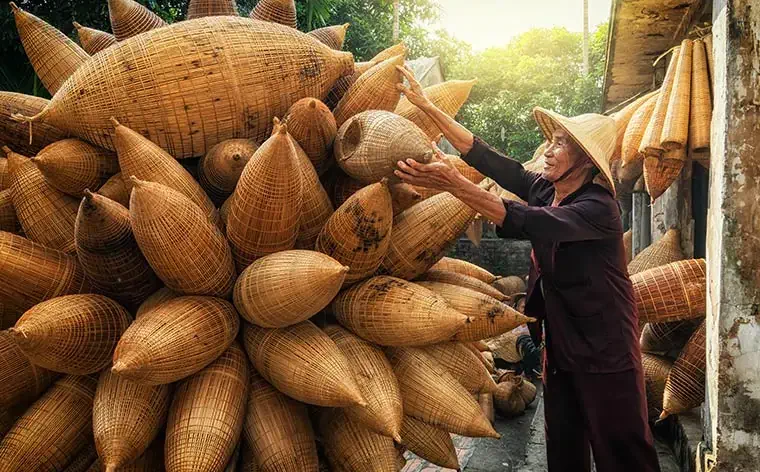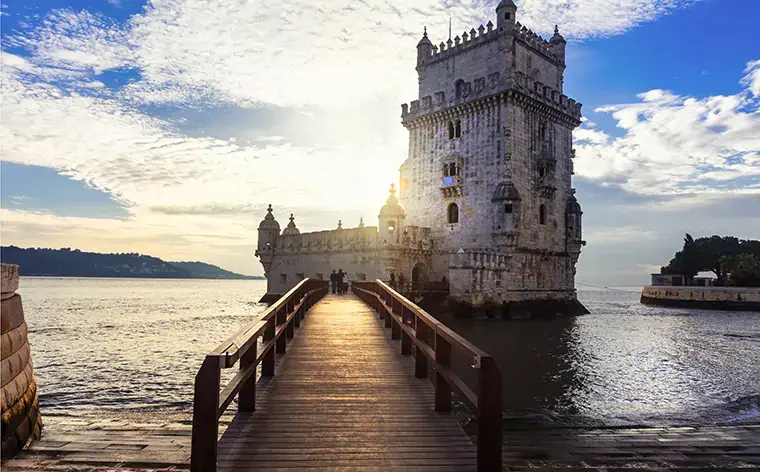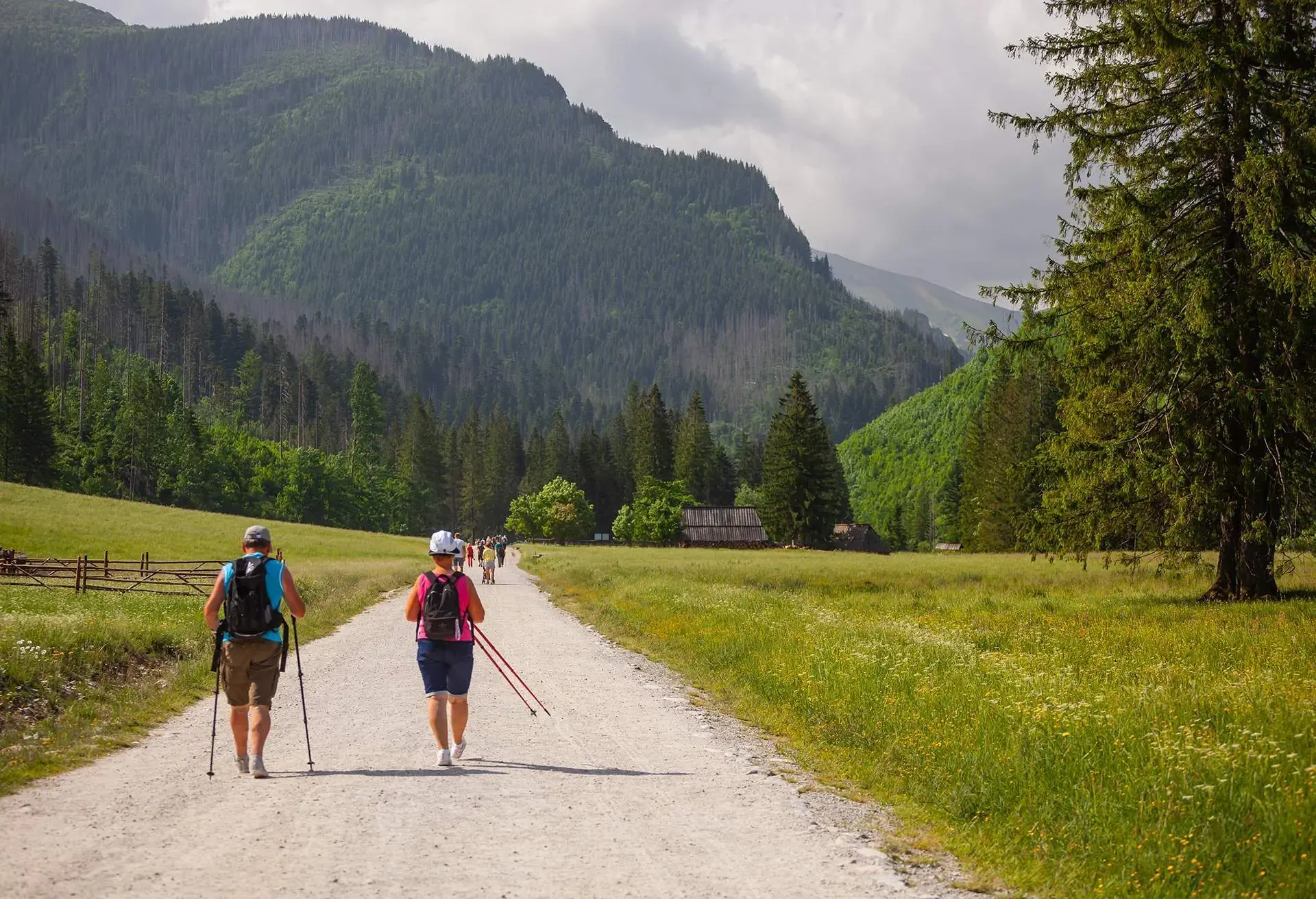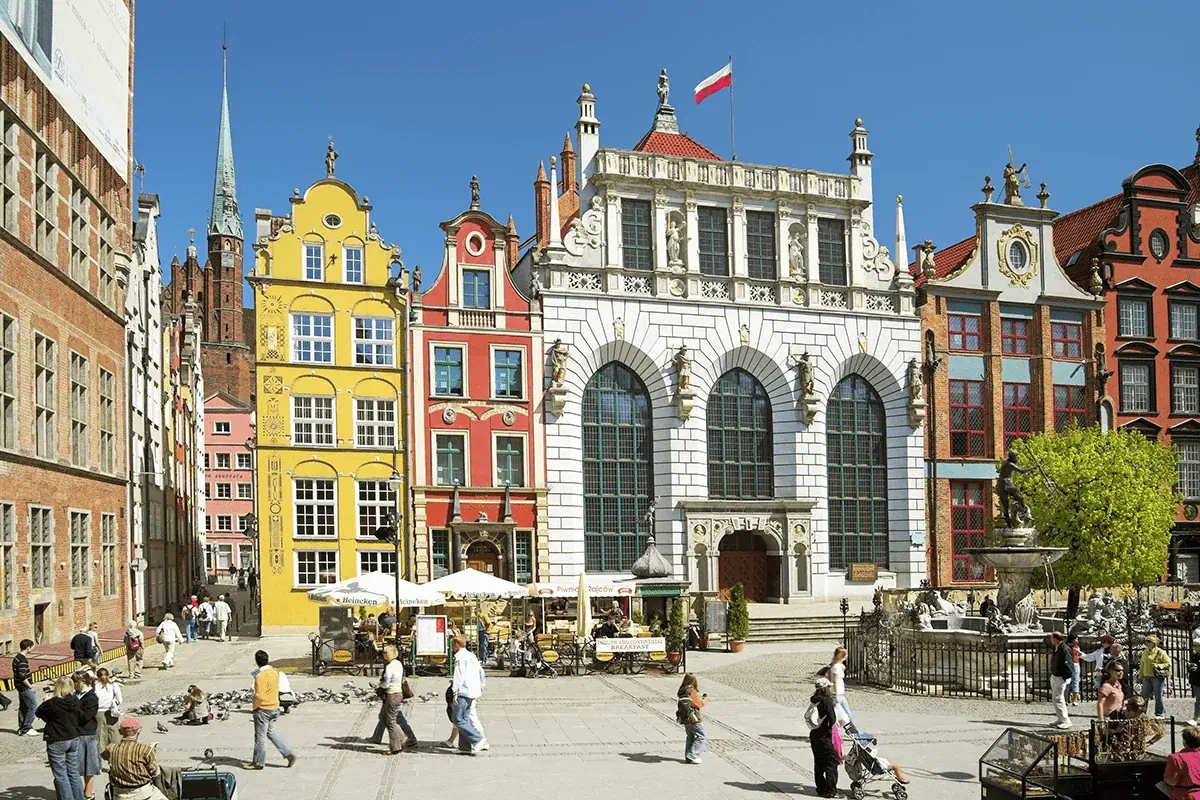Like a game of human Tetris, manoeuvring motorbikes fill every gap of concrete. A chaos of moving shapes as commuters make their way to work or school, sometimes juggling four or five on a single bike. The chaos comes to a halt and there is a split second to run. One passenger beams a nod of approval to take a chance and cross the road. There is no room to hesitate, no second to waste; it is simply the first adjustment to the pace of Vietnam.
While famous for its complicated history, Vietnam possesses much more than colonial roots and influences from the war many decades ago. The country boasts pristine coastlines with towering limestone bays and an interior of flooded deltas, bustling villages and ancient towns built on flowing canals, each with their own way of life and unique characteristics.
From north to south or in any direction, 12 days gives an immense cross-section to the diversity of life in Vietnam. The change in pace from rural to urban, and the ways of life for everyday people is what makes travel to the country so unique. This is the ultimate guide to reaching the highlights and exploring lesser known destinations in Vietnam over 12 days.
Days 1-2: A history lesson in Hanoi
Crossing the streets in Hanoi is an … anthropological challenge
After a bowl of Xoi Xeo sticky rice and a strong coffee, start your day in Hanoi’s Old Quarter, a labyrinth of 36 streets and narrow alleyways hiding markets, temples, cathedrals and colonial homes. Set out on foot for the Thang Long Imperial Citadel, Dong Xuan Market, St Joseph’s Cathedral and the 87 Ma May Street ancient home before sitting down to a lunch of bún chả, the succulent pork and noodle dish originating in Northern Vietnam. The true beauty of the Old Quarter is best found while wandering alleys and entering shopfronts, joining the flow of people who have followed a similar routine for generations. Shop, stop for street snacks and end the day at an evening Water Puppet Theater show; an unusual puppetry originating a thousand years ago.
After a breakfast in the cafes in Hoan Kiem, Day 2 is all about scrubbing up on Vietnam’s history at the Ho Chi Minh Mausoleum and Museum (not to get confused with Ho Chi Minh City). Dress appropriately and move with the line, taking in the quirky and abstract storytelling of the Communist history of the country. After, hop on a moto-taxi to the Hoa Lo Prison, which is an unnerving but important chapter from the War. While difficult to witness, the site serves as a historic reminder of how far Vietnam has come. Chow down on a piping hot phở soup before an afternoon journey to the northern coast.
Days 3-4: Drifting through the Northern Bays
It’s a cliché, but one worth pursuing! Nothing beats drifting around in Halong Bay
A picturesque scene of historic Chinese sailing ships (called junks) drifting through limestone cliffs on crystal clear waters. It is the quintessential image of Vietnam, and does not disappoint no matter how you choose to set sail amongst the islands of Vietnam’s Northern Bays. Whether kayaking through caves, climbing on pillars, smashing beers on deck or swimming in glowing plankton, there is a boat for every type of traveller. To bypass the crowds, seek out an overnight cruise or camp on one of many deserted islands. Don’t book ahead, as captains and tour providers scour the streets of the main drag in Halong Bay looking for travellers. If you’re needing a quieter adventure and happy to splurge a little more, cruise to the remote and lesser known waters of neighbouring Bau Tu Long.
After a couple of days drifting through the pristine emerald waters, it’s time to set sights on a more rural escape in the Quang Binh central region. While travel distances in Vietnam can feel extremely long, there is an array of overnight buses and trains for heavy sleepers. An overnight bus departs daily at 7PM from Halong Bay to Đồng Hới, arriving in the early morning. Despite catering for tourists, the sleepers are mostly built for the average height of Vietnamese people, so be prepared to tuck in and lose the feeling of your legs after a few hours.
Days 5-6: Breathing fresh air around Phong Nha
An expedition through Phong Nha Ke Bang National Park is a true adventure!
From Đồng Hới, it’s a short transfer to Phong Nha, a gateway to the caves of Phong Nha Ke Bang National Park and the trails of Bong Lai Valley. Two days will breeze by under the shadows of karst mountains, trudging unmarked paths in jungles to isolated caves or biking through rice fields and villages scattered through the countryside.
For true adventurers, Phong Nha is all about expeditions to the untouched network of more than 300 caves. Skip the visit to Paradise Cave, which is decked out in tacky neon lights, and try a day expedition to the swirling geological display of Hang Tien. For those keen to linger a little longer in the magnificent structures, the 2-day expedition to Hang Én is an awe-inspiring display by nature; a night spent camping on a secluded beach beside a river, inside the enormous cave itself. Caving experience is not required for many of the short trips, as many operators will perform an extensive brief to the group before each expedition.
For travellers keen to relax in rural Vietnam, rent a bicycle or motorbike and set sights on the lesser known ochre mud paths of Bong Lai Valley. Numerous homestay options exist to get in touch with local people who practice an everyday farm-to-plate philosophy, and the scattered eco-farms and infamous ‘The Pub With Cold Beer’ based by the riverside are excellent places to chill.
Days 7-9: Reading poetry in Hue and Hoi An
Explore the walled palace of Hue’s Imperial Citedal, a Unesco World Heritage Site
Set off early on a bus to Hue, the bougey populace for artists, poets and academics in Vietnam, built as a tidy grid of homes nestled in green hills along the Perfume River. Once settled in, spend the afternoon at the crumbling Thien Mu Pagoda and wander the walls of the Hue Citadel, which is decked out in literature, art and poetry from the 17th and 18th century. Remember to always pack a raincoat, as the city is known for inconvenient and torrential downpours.
Another early rise for He Café, a quirky space crafted from used weapons, typewriters and memorabilia from the war, before setting off for Hoi An. This route is best enjoyed on the back of a motorbike, winding through the breathtaking Hai Van Pass from lush mountains to empty coasts. Tour operators hang outside the Hue Citadel, offering the four-hour journey with numerous stops to take in viewpoints. Otherwise, a train or bus connects the two cities, with a slightly faster but less scenic trip.
Soak up Hoi An’s vibrant and contagious atmosphere
Arriving in colourful Hoi An, the only itinerary is to explore its vibrant and contagious atmosphere. The ancient city, reflected by the Thu Bon River, boasts colourful colonial buildings, glowing lanterns on every facade, restaurants and bars on every corner and a magnificent array of tailors and handicraft markets. It is a sanctuary for photographers, foodies, shoppers and everything in between. Spend the day in a traditional cooking class, measuring up a tailored suit, weaving through ancient homes or watching the riverbank as fishermen haul in nets and nearby merchants barter for local produce. Rent a bicycle in the afternoon for a sunset drink and swim at the nearby Cua Dai and An Bang beaches, assuming it isn’t typhoon season.
All transport to Ho Chi Minh departs from the nearby city of Da Nang, with the 1.5 hour flight highly recommended as opposed to the back-breaking 17 hours by sleeper train.
Days 10-12: Floating upstream in Saigon and the Mekong
Stop by the majestic Hotel de Ville de Saigon ‒ the city’s most photographed icon
Be ready to rejoin the chaos and quirkiness at the final stop in Ho Chi Minh City, also known as Saigon to many. Motorbikes again rule the roost in the bedlam of this modern and commercial metropolis, but it’s important not to get overwhelmed by the scale and instead focus on the Saigon’s tradition, hybrid cuisine and proximity to the nearby Mekong River.
While the War Remnants Museum and Cu Chi Tunnels are must-see stops, it is the unexpected discoveries which make Saigon so unique. By morning, you can be practicing martial arts, line dancing or doing tai chi with locals in Tao Dan Park, by afternoon sipping high tea on the 53rd story of Bitexco Tower, and by night laughing at the ‘Amazing Viet Show’, a bizarre comedy and circus act poking fun of common Vietnamese customs. For the biggest city in Vietnam, Saigon tends to feel light and laid back just like its cuisine, much sweeter and blended by numerous international influences in the south. Be sure to try crispier and fluffier banh mi baguettes, coconut infused chicken cà ri gà and cinnamon pho bo beef soup.
No trip to Vietnam is complete without a trip down the Mekong river
Finally, it would not be a trip to Vietnam without experiencing the magic of the Mekong, known as the ‘rice bowl’ for its prosperity in agriculture. A region that could not be more different than Saigon — with its lush rice paddies, floating markets, narrow canals and thatch hut roof villages. While swarms of crowds join day trips to the Mekong, the region offers endless possibilities for getting off the beaten track and having one last experience in an idyllic and laidback rural landscape. Chose an overnighter in places like An Binh, where time is spent cycling by farms and receiving hurried waves from villagers, before settling down to an authentic home meal with a Vietnamese family in a homestay. It’s a perfect send off to Vietnam.
Read more:







